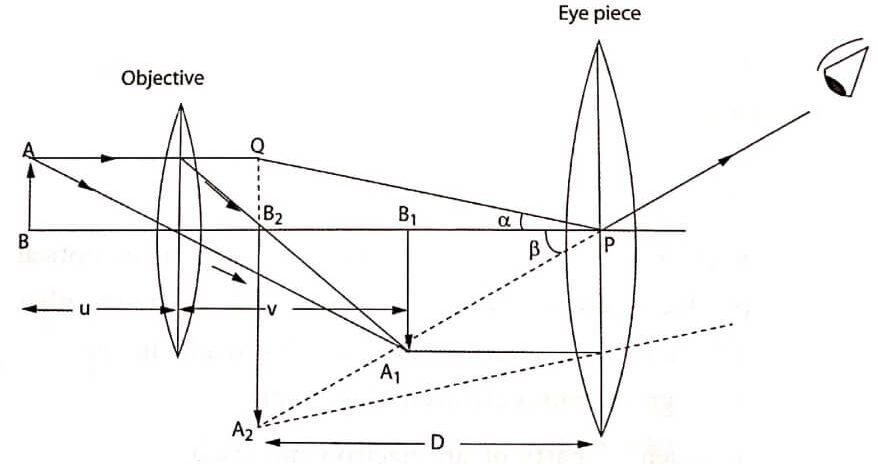A microscope is a device which is used to view the magnified image of a smaller object, which cannot be clearly seen through a naked eye.
In general, we can classify the microscope as simple and compound microscope. A simple microscope is made of a single biconvex magnifying lens held in a simple frame. A compound microscope is made of two lenses (or) system of lenses for better magnification. These types of microscopes give a stereoscope vision and also reduce the strain of our eyes.
Magnifying power
![]()
Resolving power
It is the ability of an optical instrument to form distinct and separable images of the two point objects which are close to each other.
![]()
λ0 – Wavelength of light through vacuum.
Therefore, the resolving power of a microscope can be increased by decreasing the value of λ0. Thus, by using ultraviolet light and quartz lenses, the resolving power can be increased.
Focus

AB → Object
A1 B1→ Real image formed due to Objective
A2 B2 → Virtual image formed due to eyepiece
| Read More Topics |
| Fleming’s right hand rule |
| Black body radiation |
| Crystal growth techniques |





